Looking Ahead: The Importance of Materiality


Submitted by Guest Contributor
By Dinah A. Koehler, Deloitte Services LP and Eric Hespenheide, retired partner, Deloitte & Touche LLP
Part of the Business Trends series
In a series of blog posts over the past few months we have explored themes from The Responsible Enterprise, a chapter from Deloitte’s 2013 Business Trends. Prior posts have explored the increasing strategic importance of ESG (environmental, social, governance) issues and have examined the drivers fueling this trend.
In this fourth and final post we explore the issue of materiality.
Why Materiality Matters
Numerous external forces are converging to create increased awareness of ESG factors. These forces are challenging CFOs to reconsider a traditional reporting model that may not effectively meet today’s information needs. Today, 60 percent of CFOs at large  global enterprises – with average annual revenue of at least $17 billion – believe that sustainability challenges will change financial reporting and auditing.
global enterprises – with average annual revenue of at least $17 billion – believe that sustainability challenges will change financial reporting and auditing.
Of the 250 largest companies in the world (G250 companies), 95 percent now issue separate sustainability reports. Moving forward, it is likely there will be greater alignment of traditional financial reporting and reporting on ESG topics. The International Initiative for Integrated Reporting (IIRC) is proposing integrating the disclosure of standard financial information with ESG information to provide a more complete view of the commercial, social and environmental context within which a company operates.
Importantly, integrated reporting will likely require reporters to make valuation impacts of ESG information more explicit. In the context of how the “total mix” of information can influence an investor or others’ decisions, companies need to expand their view of how financial and non-financial information can be reported—which can be overwhelming.
Right now, there is often a disconnect between what ESG information companies disclose to their stakeholders and the data that actually drives management and investment decisions. Some think companies disclose too much information while others complain about too little information. Most agree that it is hard to know which information is business-critical for the long run.
For these reasons, there is increasing focus in the sustainability world on the principle of materiality as the essential filter for determining which ESG information will be useful to key decision makers. The Global Reporting Initiative (GRI) has placed materiality at the center of ESG reporting in its most recent G4 sustainability reporting guidelines.
A Crucial Challenge – Defining Materiality
Many corporate leaders, including sustainability managers, are focused on the concept of materiality beyond the traditional and well-understood financial statement materiality concept. These leaders recognize that the traditional interpretation of financial statement materiality does not adequately capture non-financial business drivers. GRI guidance encourages companies to consider what is material to stakeholders, but the guidance does not provide enough information on what that could mean for a company. Is it a visit to the emergency room because a child has an asthma attack precipitated by air pollution? Is it five such visits in a week, because the family lives next to a facility, which emits particulate matter that causes chronic infection of the lung? Is it fires in a Bangladesh clothing factory? Is it  rainforest destruction? How many acres? And in what timeframe?
rainforest destruction? How many acres? And in what timeframe?
For many companies the problem is not a lack of ESG issues that stakeholders think are important. The challenge has been figuring out when and why these issues might become financially material to a company. This is particularly difficult for ESG issues because they are often related to externalities and are not properly priced in the marketplace. Thus, without a clear price signal, figuring out materiality is a more subjective rather than objective endeavor especially if you are only looking at it from a traditional financial statement standpoint. The costs of the externalities to others in the community, the supply chain, and in the broader ecosystem are real and can be quantified via health economics and environmental economics. This is knowledge that needs to be more integrated into corporate decision-making on the trade-off between total (social and environmental) costs and benefits of every product and technology being used and produced. Omission of this type of information means that it has zero value to the company.
The definition of materiality is not as big a hurdle as often stated in sustainability circles. According to SEC's SAB 99, reporters are directed to consider quantitative and qualitative factors – see Table 1. In short, materiality determination is not limited to financial (quantitative) information. If you read the definition carefully, you note that a matter is material if there is a substantial likelihood that the information will impact decisions of a reasonable person.
In other words, materiality is not 100 percent certain, even though it is often treated as such in quarterly reports. We know, based on voluminous academic work, that ESG issues can influence economic outcomes and economic decisions. The problem is that in most cases managers have a hard time assessing the likelihood of a material ESG event (e.g., accident, boycott, strike). Many managers assume it will not happen to their company, because they are managing to price, cost and traditional financials, and not to risks.
Table 1: Definitions of materiality
A matter is “material” if there is a substantial likelihood that a reasonable person …relying upon the report would have been changed or influenced by the inclusion or correction of the item … financial management and the auditor must consider both “quantitative” and “qualitative” factors in assessing an item’s materiality.
SAB 99
Information is material if its omission or misstatement could influence the economic decisions of users taken on the basis of the financial statements. Materiality depends on the size of the item or error judged in the particular circumstances of its omission or misstatement. Thus, materiality provides a threshold or cut-off point rather than being a primary qualitative characteristic that information must have if it is to be useful.
IAASB Framework for the Preparation & Presentation of Financial Statements, paragraph 30.
Two Key Challenges to ESG Materiality
There are two primary challenges inherent to ESG issues:
- Casting a net wide enough outside of traditional financial performance metrics to include non-financial issues, such as ESG risks and opportunities. GRI provides over 400 metrics that might be relevant to the company and stakeholders and ultimately deemed financial material. That is a reasonably wide net.
- Establishing a robust filter that yields a smaller subset of issues that really matter to the company in a consistent way and ensuring that issues are not omitted just because they will or may occur in the future.
The second challenge – developing a credible and robust materiality filter is where more work needs to be done. Companies can tackle this by searching for key performance indicators that apply to their industry sector. The Sustainable Accounting Standards Board (SASB) is in the process of developing sector-specific materiality filters—initially on a voluntary basis. As another example, congressional fiat has made reporting on conflict minerals mandatory. Unfortunately a standardized, generally accepted short-list of  ESG key performance indicators is missing.
ESG key performance indicators is missing.
The other way is to do the analysis required to assess the likelihood that an ESG issue can impact corporate strategy and create or destroy a firm’s value by impacting cash flows in a given time period. Is there a particular event that could occur in the near and medium term that can change a company’s valuation? Do stakeholders inside or outside the company play a role in precipitating or averting an ESG event? Does it matter how stakeholders perceive a company’s approach to an ESG issue, particularly one of great concern and high impact? We believe it does.
Deloitte has outlined a process for ESG materiality determination that is grounded in decision sciences. The keystone of the approach is a multi-stakeholder process that brings sustainability managers together with the CFO, controller and other stakeholders to discuss how the company builds value (today and in the future). As a result of the process, the information that is ultimately disclosed to shareholders and other stakeholders is more likely to be:
- Aligned with the business’s strategic objectives,
- Understood as part of the value proposition for various investment projects,
- Incorporated into the assessment of how various projects are evaluated, and
- Effectively communicated with a direct linkage to the business’s strategic objectives.
In short, this approach helps make ESG information more decision-relevant inside the company and positions the company to better manage its risks. Equally important, it focuses on helping companies identify and ultimately disclose forward looking information on those ESG and other non-financial issues (e.g., R&D or talent) that are most likely to impact a company’s value. Precisely the type of information investors need and are asking for.
Ford CEO Alan Mulally Talks Straight with Bloggers at Detroit Auto Show
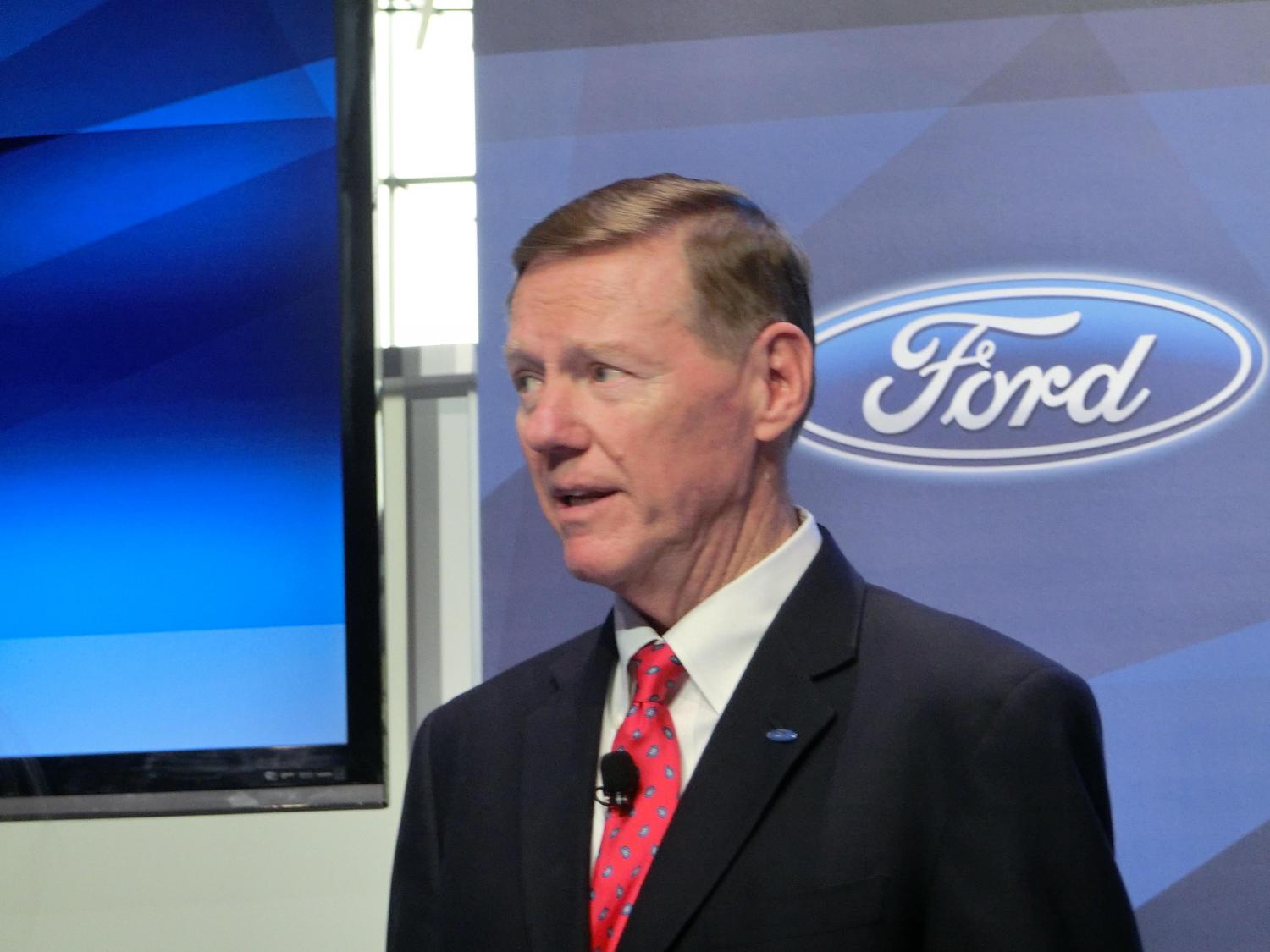

At the North American International Auto Show's opening day in Detroit this week, Ford's affable CEO and President, Alan Mulally, held a Q&A session for invited bloggers -- who were given an open forum to ask questions about Ford and the auto industry in general.
The discussion ranged from what distinguishes the company from others to what strategies the company will deploy in order to continue their success in an increasingly competitive industry going forward. Along the way, Mulally was asked about the role of new technologies and how they will shape the future of transportation.
The following is a quick digest highlighting some of the key points from the discussion.
What role will cars play as population growth continues to rise, and how will the company bridge the gap with a generation that isn't growing up with car ownership?
As cities become more dense and city living becomes the prevalent lifestyle choice globally, while there will always be a need for cars, Mulally says, "We can't keep putting cars in the world's cities." Achieving "personal mobility" will become increasingly important, and it will be most important that governments invest in transportation networks in dense cities to keep people moving around.
If you are wondering whether autonomous (or "driver-less") vehicles will be an important part of the urban transportation mix, Mulally was not bullish, stating, "I think it will be a while" before such vehicles become commonplace. He identified two near-term impediments: technology and economics. Though various entities, notably Google, are testing the technology now, and indeed Ford itself had a version of the technology on display, it doesn't come cheap, adding tens of thousands to the cost of each vehicle.
In addition, as Mulally formerly headed aircraft manufacturer Boeing -- where flight deck automation has existed for years, he pointed out, "airplanes have two pilots for a reason," asserting that despite sophisticated sensors and algorithms on board aircraft, human oversight is still essential for safety. Coincidentally, I write this on the 5th anniversary of Captain "Sully" Sullunberger landing his US Airways airliner in the Hudson River saving 150 lives, which serves as a timely reminder that he makes a good point! But even so, Mulally suggested that rapid transit systems would, in many ways, be better than autonomous vehicles in moving more people around our cities.
More specifically to Ford's range of vehicles both today and in the near future, power-train options came under significant discussion. Here, Mulally categorically stated that, "the number one thing we can do is improve fuel mileage every year" is "continually improve the internal combustion engine." Mulally committed that Ford will continue to improve fuel economy across their range, asserting that the internal combustion engine won't be going away anytime soon.
That said, Mulally said Ford's brand promise is "the power choice," and to that end, highlighted the company's ongoing commitment to provide a range of drive-train choices to customers, listing off those already offered by the company today: efficient gasoline and diesel engines, hybrids, plug-in hybrids, and fully electric vehicles.
For full electric vehicles to reach critical mass, however, Mulally shared his belief that a greater number of public-private partnerships are going to be needed to develop the necessary public charging infrastructure to make them more popular, and just as importantly, he identified the need for more clean electricity generation in order for electric vehicles to have a greater positive environmental impact. As far as Ford is concerned, we'll see more electrification from them, if not pure EVs, going forward.
Fans of diesel cars should note that while Ford offers diesel engines in their trucks, clean diesel passenger vehicles - notable for their favorable fuel mileage - won't be offered by Ford in North America just yet. Mulally stated that the technology adds $6,000 to $9,000 to the cost per vehicle, mainly to meet stringent regulatory requirements. Still, Mulally said diesel technology has come along way, and suggested that a harmonization of diesel emissions standards around the world would likely be the catalyst to bring them to Ford's American markets. With a broad range of hybrids across a range of vehicle platforms, Ford demonstrates its commitment to fuel efficiency and already is the largest seller of hybrid vehicles, even beating Toyota last year.
Image credit: Phil Covington
Disclosure: Attendance by the author at the auto show was arranged and paid for by Ford
Class Action Litigation: Who's the Real Winner?
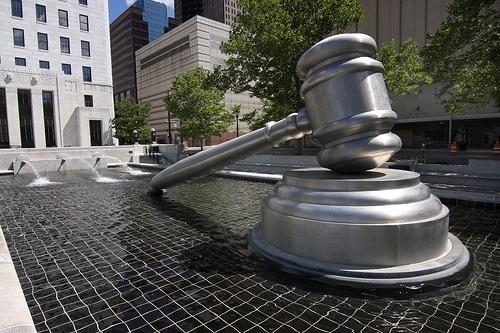

Class action litigation is a contentious issue these days. The Internet is filled with debates and discussions challenging its success – and purpose – as a form of litigation. Does it work? Does it really recover losses for consumers? Does it really deter crime and improve business practices?
Not surprisingly, the answers often depend on whom you ask.
For those who receive an email or a postcard in the mail telling them that they are class members in a litigation that now represents the interests of hundreds of thousands of consumers, the news can be intoxicating … that is, until they realize that what they are really entitled to receive may be as small as a box of cereal, a gig of RAM or a second jar of sandwich spread. To the inexperienced class member, the award can seem more like the benefits of a lottery than a legal grievance that took years to organize, has cost millions of dollars to prosecute and involved hundreds of thousands of disgruntled consumers.
The Goal of Class Action Litigation
But a class action these days isn’t supposed to enrich the plaintiffs. It isn’t even supposed to compensate the class members for pain and suffering. The purpose, says Michael Kirkpatrick, who serves as an attorney for the nonprofit consumer advocacy organization Public Citizen Litigation Group, is to stop the illegal action and make sure the accused can’t benefit from the monies he or she has acquired in the process.
“[You] are stopping the bad behavior,” Kirkpatrick explains.
Think of it as sort of a large community advocacy meeting rather than a personal lawsuit. The citizens decide to band together and pool their resources because they want something stopped. The victims – or plaintiffs in this case - may not get all of the money back that they lost, but the problem, whether it is misleading advertising or an unfulfilled contract for services, gets halted.
But does that mean that the class-action litigation system always works the way it is supposed to?
The answer to that question, as class action members in two similar suits recently found out, often depends upon where the court case is heard.
One Defendant, Two Class Action Results
In 2012, a trial court in Florida made history. Its ruling may not have seemed out of line when it came to the defendant’s financial claims, but the resulting outcome of the judge’s decision made nationwide news.
Persels and Associates, a debt-settlement firm that included its own cadre of attorneys was slapped with a class action for onerous, misleading fees for its promised debt relief.
The suit started out representing 12,000 Florida residents. Kirkpatrick says Persels then requested that the court wrap in the rest of the 125,000 nationwide members. The court agreed and extended the class action to include all plaintiffs from 49 states. Washington state was left out because it had already initiated a class action against Persels under its own weighty consumer protection laws.
When it came time for the case to be settled, Persels claimed that it did not have enough money to do so. The judge accepted Persels financial claims and ruled that the 125,000 class members would receive nothing, and the representing attorneys would be compensated $300,000 for their time and expenses. The court also ordered Persels to make a charity contribution (what is called a cy pres), which is common in cases of negative value.
“But the Persels case isn’t a negative-value case,” Kirkpatrick says. Class members each lost $1,000 or more. The plaintiffs have since won an appeal, and the case has been sent back to the trial courts.
But Washington state saw things differently. According to Kirkpatrick, one reason had to do with an exception that Persels and its affiliated debt reconciliation company, CareFirst, were trying to claim. Debt-settlement laws allow companies like CareFirst that utilize legal services for debt negotiations to exempt legal firms from litigation rulings. The exemption was recognized in Florida, but was rejected in Washington, which said Persels wasn’t providing contracted services; this was its full-time business.
The loss of that exemption weakened Persels’ hand and forced it to negotiate settlements with the class members, who on average saw payments of about $500 each.
But Is It 'Fair, Reasonable and Adequate'?
Kirkpatrick admits that good class-action settlements often rely upon careful oversight from the bench.
“We [Public Citizen] feel the class-action device is a good thing, but it does have to be policed,” says Kirkpatrick. The court has the responsibility of approving the settlement, by saying it is "fair, reasonable and adequate," a role that recognizes problems like the "reverse auction" approach in which a defendant’s lawyer, faced with hundreds or thousands of class litigants, may go “shopping” for the best settlement with a plaintiff’s lawyer. Oftentimes that's determined by whether the plaintiff's state of residence has stiff consumer protection laws like Washington, or weaker ones, like Florida.
And that’s also why state attorneys' offices and organizations like Public Citizen play such a vital role as the Big Brother that is willing to lodge an objection to poor settlements. He says Washington’s settlement will now allow the plaintiffs in the Florida case to call Persels' financial claims into question.
The Internet: The Commercial Angle
But while the Internet has made it easier for people to be notified when there are class-actions that may affect them, it’s also put a commercial spin on class action litigation. Consumers can now go to any number of websites and, with a push of a button, join a class action. Some require proof that they were customers of the defendant, but others rely only on the consumers’ electronic signature that they are eligible to win an award. Kirkpatrick points out that the latter category is usually for purchases of only a few dollars, as was the case in the Kellogg’s Frosted Mini Wheats and Nutella class actions.
And the relatively small award shouldn’t be interpreted as a bad settlement, Kirkpatrick says. “It may be that a large number of people were defrauded for a very small amount of money. And, in the aggregate, it is millions and millions of dollars and is important. [The] wrongdoer needs to be held accountable and should have those ill-gotten gains disgorged.”
A Worldwide Appeal
The Class Action Fairness Act of 2005 was intended to streamline class actions. If anything, however, the number of litigations has grown, and so have the questions of whether plaintiffs always receive "fair, reasonable and adequate compensation."
Some courts have attempted to address that concern, such as in the 2010 case of Van Horn vs. Nationwide Property and Casualty Co., where the court decided to reduce the class council's requested fees from $5.9 million to $3.2 million, stating why it felt that "the class members did not receive especially good benefit" (Pg. 16). But as Mayer Brown's study shows, there is still ample room to question whether both courts and counsel have consistently done their best to ensure that the class-action device lives up to its instructed purpose.
The increasing popularity of class actions throughout the world these days suggests that the problem may not be in the model of litigation or whether it has value in the courts, but in the priorities that govern their outcome.
"A plaintiff’s lawyer who takes on a class action needs to be prepared to put time and money at risk," Kirkpatrick notes in regard to the Florida Persels case.
And they need to be willing to decide whether it is better to walk away voluntarily if they feel they can't ensure the class members receive a just settlement. "It is wrong for them to end up sort of caving in and taking a bad settlement because they feel they can’t invest properly in the case."
Image credit: Sam Howzit
Australian PM Ignores Climate Change, Trades Renewables for Coal


At least the U.S. doesn't hold a monopoly on climate change denialists in public office.
The Australian government, under Prime Minister Tony Abbott, seems committed to exacerbating its nation's climate woes. Even as his Environmental Minister approved a vast coal mine that will produce 40 million tons of CO2-emitting coal per year, Abbott is calling Australia's strong renewable energy sector into question.
He's cutting funding for renewables, threatening to remove the 20 percent renewable energy standard and even falling back on the old and largely debunked criticism that wind power has negative impacts on human health. Australia's National Health and Medical Research Council looked into the issue in 2010 and again in 2012. And now Abbott is calling for another review. Because, why not?
And just for good measure, he's also dismantling Australia's well-regarded plans for curbing carbon emissions and jettisoning the nation's goals for carbon reductions.
Here in the Midwest, where I sit, we just went through some winter days with lows of -8 degrees Fahrenheit. Brr. Enter the talking heads, snickering sarcastic comments about global warming. You know, because they were cold. And yet, our friends on the other side of the equator are entering into another exceptionally dry, scorching, brushfire-filled summer.
Bats are literally falling from the Australian skies by the tens of thousands, dying in the record heatwaves. Deadly brush fires are rampaging through suburban neighborhoods, destroying scores of homes and taking at least one life. And though the summer is still young, it's already reaching 40 degrees Celsius in some places. That's 104 degrees Fahrenheit. The average temperature just about anywhere in Australia but for the coasts is expected to get as high as 45 degrees Celsius, or 113 degrees Fahrenheit. That's average temperature. Hotter in some places, colder in others. Average! That's hot.
Prime Minister Abbott's response to all of this - “fire is part of the Australian experience … it has been since humans were on this continent.” Of course I'm translating that from the original Australian: "Naw, that's not a brush fire, mate. This is a brush fire."
It's a waving away of a very real trend toward more severe weather events: droughts, hurricanes, derecho winds, polar vortexes and heat waves. Yeah, we've always had them. But they're getting worse.
The most baffling thing about Abbott's assault on renewable energy is that it also flies in the face of economic good sense. Australia has some of the cheapest wind power in the world and is an ideal place for wind power. In Australia, wind power even rivals the cost of coal. The Bureau of Resource and Energy Economics agrees that wind power is competitive with fossil fuels.
So why is Prime Minister Abbot saying things like "lower power prices are the government’s primary goal" while throwing roadblocks in the way of one of the cheapest - and getting cheaper - sources of electricity?
Australia can power itself entirely through renewable sources like wind and solar power by 2040. They could do it affordably, reliably and cleanly -- working towards reducing the climatic impact on the nation. There's simply no benefit to moving back toward coal, and nothing but risk.
Image Credit: Brett Coulstock: Source
Women in CSR: Kathy Hannan, KPMG
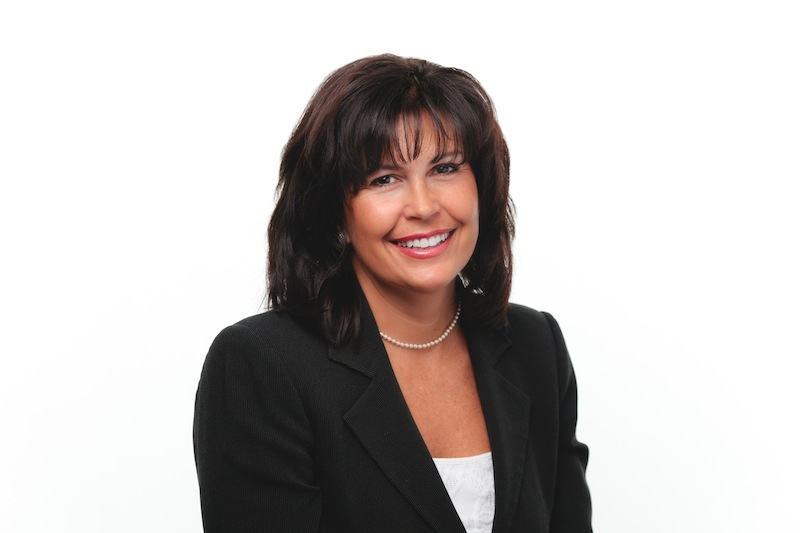

Welcome to our series of interviews with leading female CSR practitioners where we are learning about what inspires these women and how they found their way to careers in sustainability. Read the rest of the series here.
TriplePundit: Briefly describe your role and responsibilities, and how many years you have been in the business.
Kathy Hannan: I am the National Managing Partner, Diversity and Corporate Responsibility. I began my career at KPMG in 1985 and was admitted to the partnership in 1994 in the international corporate services practice. In 1996, I was promoted to Midwest Partner-in-Charge of International Services, and Partner-in-Charge of KPMG’s Chicago Metro-Tax practice in 1998. In 2000, I was appointed to the role of Vice Chair, Human Resources, and in 2004, I was named the Midwest Area Managing Partner of Tax Services – the first female to receive such a position at KPMG.
In 2009, I was appointed to my current role as National Managing Partner, Diversity and Corporate Responsibility, in which I provide the strategic direction to leverage philanthropic partnerships, stakeholder engagement, environmental best practices, and diversity objectives with the firm’s strategy for long-term enterprise sustainability. I also serve as the global lead partner on several of the firm’s priority accounts.
3p: How has the sustainability program evolved at your company?
KH: KPMG’s sustainability program is more than just a program – it is who we are. We view corporate responsibility as a valuable opportunity to engage others, one that is leveraged throughout our firm through our integrity and values, our diverse and inclusive culture, the ways in which we interact with our people and serve our communities, and our advocacy for the environment. We believe that corporate responsibility is about sustainability: By doing business in a better way, we help drive community, talent, environmental, and market sustainability, to the benefit of all.
At KPMG, I’ve had the opportunity to develop a more integrated strategy for the firm acknowledging our unique position in the marketplace in creating a sustainable future which has really resonated with the broader community and our people. It is through firm-sponsored programs and networks that we have really made this difference in the communities in which we live and work.
3p: Tell us about someone (mentor, sponsor, friend, hero) who affected your sustainability journey, and how.
KH: It is difficult to single out one individual who affected my journey, as there have been so many influential people I’ve met along the way and I know there will be others in the future who will continue to have an impact on me.
However, there was one friend I had as a child, with whom I had lost touch for some time when her family moved back to the Middle East and recently reconnected with. She made me realize that there is an “I” in leadership and that “I” stands for inspiration. She taught me hope, positivity and focus on potential, all of which have been reinforced throughout my life by many people I’ve encountered on both personal and professional levels.
3p: What is the best advice you have ever received?
KH: Staying in the moment when engaging on any level – whether it is personal, family, work, community or otherwise. We all have busy schedules – both personally and professionally – but it is critical to focus on what I like to call “the two P’s”: staying positive and always considering the potential.
3p: Can you share a recent accomplishment you are especially proud of?
KH: There are many things that I am personally proud of, including my family, my colleagues, my career and recently embarking on a journey to achieve my PhD. From the standpoint of KPMG, I was especially proud of our Chairman, John Veihmeyer, for receiving the Corporate Responsibility CEO of the Year award, which was a huge achievement for the firm.
Another recent achievement I’m proud of is the 10-year anniversary of the KPMG Network of Women (KNOW), which I helped to establish in 2003 with the firm’s Women’s Advisory Board. Over the last ten years, we have grown KNOW to 63 local chapters in cities across the U.S., which are responsible for delivering a wide array of women’s programs and activities to foster an inclusive environment where women can thrive.
3p: If you had the power to make one major change at your company or in your industry, what would it be?
KH: My one major change would be that every company understood the potential and power they have to positively impact the future and create a more sustainable world through their inspiration, behaviors and investments.
3p: Describe your perfect day.
KH: It’s always a GREAT day when I can get through my ever-expanding To Do List! But, the perfect day encompasses all that is important to me – my family, my work, my friends, and my own self. I believe that leaders have to make time to take care of themselves in order to be effective and feel stimulated. And the thing that gives me the biggest charge is having an impact. Whether someone feels inspired by my work, the work of my colleagues, or the work of KPMG in the community…what can be more perfect than that?
BP Research Shows Global Emissions Will Jump 29 Percent By 2035
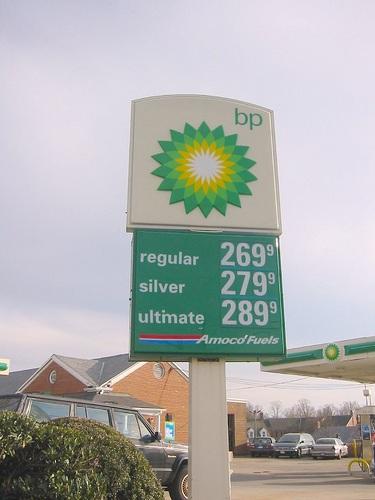

BP released its fourth annual BP Energy Outlook which predicts that global carbon dioxide emissions from energy use will increase by 29 percent by 2035. In fact, the report predicts that global emissions in 2035 will be "nearly double the 1990 level."
BP may not be far off the proverbial mark. In November, the UN weather agency, the World Meteorological Organization (WMO), said that carbon dioxide levels reached a record high in 2012. Between 1990 and 2012, there was a 32-percent increase in the warming effect of the global climate. The WMO expects global carbon levels to be 400 parts per million (PPM) by 2016, which is greater than the 350 ppm many climate scientists say is the maximum level we can achieve while avoiding the worst damages from climate change.
Emissions growth in general, according to the report, will come from countries not in the Organization for Economic Cooperation and Development (OECD) while emissions from OECD countries will decline. The report expects emissions from OECD countries to decline to 1990 levels, while the emissions of non-OECD countries will be more than triple 1990 levels in 2035. Coal and gas will contribute 38 percent of the increase in emissions, with 24 percent coming from oil. Energy intensity will decline and without that decline carbon emissions in 2035 would be 40 percent higher. However, carbon intensity will decrease at a slow pace of only 8 percent from 2012 to 2035.
The report expects global energy consumption to increase by 41 percent from 2012 to 2035, compared to 55 percent over the last 23 years and 30 percent over the last 10 years. The majority of that growth (95 percent) in demand is expected to come from emerging economies. Energy use in advanced economies in North America, Europe and Asia as a group are expected to "grow only very slowly and begin to decline in the later years of the forecast period."
The shares of the major fossil fuels (oil, natural gas and coal) are each expected to make up around 27 percent of the total mix by 2035, and the rest will come from nuclear, hydroelectricity and renewables. Almost half of the growth in hydroelectricity will come from China, India and Brazil.
Gas is the fastest growing among fossil fuels, and will "increasingly: be used as a "cleaner alternative to coal for power generation as well as in other sectors," the report stated. In North America, new technologies will unlock cheaper gas supplies. The share of coal in power generation will only slightly decrease from 43 to 37 percent between 2012 to 2035. However, there is some good news. Renewable energy sources are expected to continue to be the "fastest growing class of energy," gaining market shares with an average increase of 6.4 percent a year through 2012 to 2035. Renewable energy’s share of global electricity production is expected to increase from 5 percent in 2012 to 14 percent by 2035. Renewables in non-OECD market are expected to be 45 percent of the total by 2035. Renewables, including biofuels, are expected to have a higher share of primary energy than nuclear by 2025.Image credit: futureatlas.com
John Deere Joins $200 Million Push For Next-Generation Electronics


The iconic U.S. firm Deere & Company (more familiarly known as John Deere) has been emerging as a player in the U.S. agriculture industry's transition to clean technology, and it looks like the company is going to be venturing way off the farm on its next endeavor. John Deere has just been named as one of 18 private sector partners in the new public-private Manufacturing Innovation Institute, launched just yesterday as part of President Obama's initiatives to boost the U.S. manufacturing sector into next-generation technologies.
The companies will partner with an academic team spearheaded by North Carolina State University in a $70 million effort that also draws in five federal agencies as part of a larger, $200 million initiative establishing a total of three such innovation hubs, announced earlier this year. Along with NASA and the National Science Foundation, the partnership includes the departments of Commerce, Defense and Energy.
At stake is a competitive chunk at the huge potential global market for next-generation electronic chips and related devices that achieve significant gains in both power and energy efficiency.
A Boost For U.S. Manufacturers
The focus of the Manufacturing Innovation Institute will be on developing the next generation of wide bandgap (WBG) semiconductors.
Bandgap refers to a range in which no electron states can exist in a particular material, which makes it a major factor in the conductivity of the material. WBG technology offers a significant improvement over conventional silicon semiconductors in terms of energy consumption and performance.
This is how excited the Department of Energy is about WBG technology:
WBG semiconductors are a foundational technology that promises to transform multiple industries and markets. Low- cost, high-performance power electronics are expected to become integral to everything from household appliances and consumer goods to military systems, vehicles, and a modernized grid that incorporates renewable energy.….The ability to design and manufacture innovative WBG-enabled devices cost effectively will create a strong foundation of domestic materials technology expertise and give U.S. manufacturers early entry and, therefore, a competitive edge in key global markets. Extensive use of these devices will save U.S. businesses and consumers billions of dollars in energy costs.
Instead of silicon, WBG semiconductors are based on materials like silicon carbide and gallium nitride. They are more durable and reliable over a wider range of voltages and frequencies, and they can withstand higher temperatures.
As for what difference that will make, the Energy Department cites the example of a typical laptop power adapter. With WBG semiconductors, the adapter of the future would be about one-fifth the size and reduce energy consumption by 20 percent, almost eliminating loss of power as waste heat.
The difference is even more dramatic when it comes to larger devices, namely plug-in electric vehicles. According to the Department of Energy, WBG semiconductors could shrink the energy use of a fast-charging station down to the size of a household microwave oven, in addition to offering significant efficiency improvements in the vehicle's cooling system.
Before WBG semiconductors become an industry standard, though, three obstacles need to be addressed: the cost of manufacturing them needs to be reduced, devices need to be redesigned to accommodate them, and systems must be redesigned to accommodate those devices.
A Public-Private Partnership
Joining John Deere in the Manufacturing Innovation Institute are private sector partners ABB, APEI, Avogy, Cree, Delphi, Delta Products, DfR Solutions, Gridbridge, Hesse Mechantronics, II-VI, IQE, Monolith Semiconductor, RF Micro Devices, Toshiba International, Transphorm, USCi, and Vacon.
If you're still wondering how John Deere fits into that group, take a look at the company's high tech electric tractor and you'll see.
Aside from NCSU, the academic and research partners include the National Renewable Energy Laboratory and the US Naval Research Laboratory, as well as Arizona State University, Florida State University, University of California at Santa Barbara and Virginia Polytechnic Institute.
Image: John Deere logo by Charles & Hudson
How to Solve All World Problems with Enormous Prizes (and a Dash of Ingenuity)


As a lead-up to Abu Dhabi Sustainability Week, Jan. 18-25, Masdar sponsored a blogging contest called “Engage: Cities and Sustainable Development.” The following post was a runner-up.
By Jonathan Powell
Until 1714, navigating by sea was tricky unless you were in sight of land. Getting to France from England for the latest war was simple enough – you were bound to get there if you left the south coast and just kept rowing. But once explorers started trying to cross oceans, the difficulty in calculating longitude and position became an annoying problem. People kept drowning because they had no real idea where they were. Under the marvellously named Sir Cloudesley Shovell, the British Navy suffered the appalling Scilly naval disaster of 1707. One sailor from Genova even landed in America and thought he had reached India.
To solve this problem, the British government made a simple decision. Nowadays it would be called crowd-sourcing, but back then it was called "offering an enormous prize to the first person who can provide a solution." £20,000 was up for grabs, which is worth winning in 2014, but 300 years ago in 1714 it would have been more than enough to make a large investment – if the winner was mad enough – in the South Sea company.
As a result the world was given the chronometer, and England was able to rule the waves for years to come – okay, it wasn’t good news for everyone. Nevertheless, the theory still stands up. If you need something invented or a problem solved, offer a prize. If you want to solve a big problem, offer a big prize.
Our current world issues concern sustainable living and the husbandry of precious resources rather than navigation, but they can be solved in exactly the same way as used by the Commissioners for the Discovery of the Longitude at Sea. Viz, a walloping great prize.
The problems to be overcome are well-documented. You might think your local city bus, tube train or metro is busy at the moment, but by 2050 more than two-thirds of the world’s population will live in cities. Research suggests they won’t all be in London competing with you to get on the Central line to St Paul’s, but not only do planners have to cope with this hefty increase in urbanization, they also have to do so with an eye to efficiency and sustainability.
It isn’t just the transport systems that will be creaking around the world. Urban energy usage needs to be addressed, as does the reliance of cities on water. Current waste disposal systems are reaching capacity and need to be rethought. Smart technology has a part to play, but more important is a complete overhaul of urban facilities and a reexamination of how they are provided. Prizes need to be offered for ideas to tackle energy usage, water efficiency, new building materials and innovation in all areas of city life. Everything can be integrated to reduce energy usage – from apps that tell drivers where parking spaces are to public transportation systems that reduce the need for parking spaces to internet connections to reduce public transportation usage.
New smart cities will be brimming with technological innovations, which will only come about if the great wealth of ingenuity that lies untapped in the people of the world is utilized. To advance sustainable development in cities there should be international awards offered for developments in:
- Air-driven low impact sanitation to reduce the amount of water used in waste disposal.
- Large scale, city-wide communal systems for heating and hot water.
- Re-showers that recycle the water used in showers, cleaning it when it hits the floor and sending it down onto the showerer again.
- Smart building materials that provide better environmental temperature control.
Entrants must not be restricted to large companies. The call must be sent out to men and women around the world working in sheds and bedrooms. Creativity is everywhere. The method is clear. The problems are clear. Ingenuity will provide the solutions.
History is full of examples of how prizes bring innovation. In 1908 the Daily Mail helped kick start the infant aviation industry by offering £1000 to the first person to fly across the channel. The result? In 1909 Monsieur Louis Blériot flew across the channel. Today the Google Lunar X prize is offering millions of dollars to the first private team that lands a spacecraft on the moon. If the needs of sustainable living are given the same prizes we will soon see great developments in the field. Or rather the city.
Image credit: Flickr/danxoneil
Based in the United Kingdom, Jonathan Powell blogs regularly on his site, The Flaneur.
Credit Suisse eases pressure on working hours


The Credit Suisse multinational financial services group has told its junior bankers in the US, Canada and Latin America not to work on Saturdays, unless they are involved in a “live trade”. They may, however, work on Sundays after 10am.
The Saturday policy is among changes intended to improve job quality for Credit Suisse junior bankers amid worries about the long hours culture in the US financial sector.
Other steps include a new mentoring scheme and a fast-track promotion route for promising performers.
In the UK Sir Hector Sants, who was chief executive of the Financial Services Authority throughout the financial crisis, resigned as head of compliance at Barclays Bank because of exhaustion and stress. He joined Barclays in January last year but took sick leave in October.
Chat with Impact Hub Philadelphia
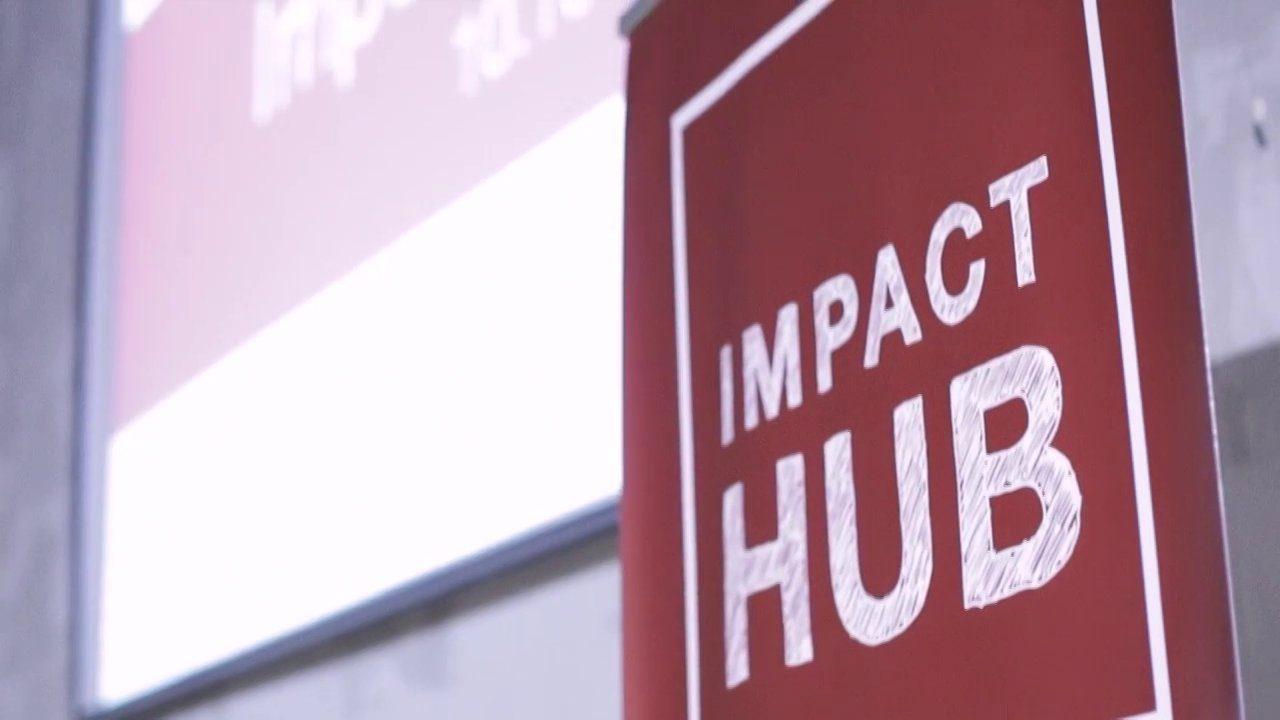

Every Wednesday at 4 p.m. Pacific (and every once in a while at other times) TriplePundit founder Nick Aster will take 30 minutes or so to chat with an interesting leader in the sustainable business movement. These chats are broadcast on our Google+ channel and embedded via YouTube right here on 3p.
Today, Nick will chat with Jeff Shiau, the Impact Hub cities program director who is currently kicking off the opening of Philadelphia's Impact Hub as well as Nate Nichols, a HUB Philly member.
Part innovation playground, part business accelerator, and part community workspace, the Impact Hubs offer a unique ecosystem of resources, inspiration and collaboration opportunities to grow impact. The global network of Impact Hubs believe a better world is created through the accomplishments of compassionate, creative and committed individuals focused on a common purpose.
About Jeff Shiau:
"I'm here in service to Philly. I'm laying ground for local leadership to come in and inspire the Philly community to work together in building a better world."
About Nate Nichols:
Nate Nichols is the President of Digital Strategy at Teal Orbit, which he joined in 2012. Nate is responsible for administering client relations and defining the digital strategy for new and existing clients.